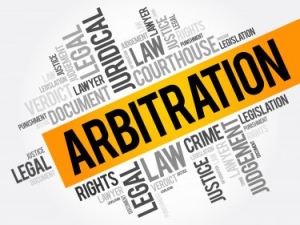PENNSYLVANIA LIS PENDENS: A SIMPLE BUT OFTEN MISUNDERSTOOD REAL ESTATE & LITIGATION TOOL
If you work in the Pennsylvania real estate market, chances are you may have encountered the lis pendens doctrine. Lis pendens is a latin term that roughly translates to “notice of a pending legal action”. As its translation indicates, the purpose of a lis pendens is to give notice to a third-person (typically a potential buyer) that a certain parcel of real estate is subject to a pending lawsuit and that any interest a buyer acquires in that real estate will be subject to the result of the pending legal action.
In its most practical sense, a lis pendens is a written filing indexed against a parcel of real estate such that any potential buyer will be made aware that there is an ongoing dispute relating to title of the property. This effectively precludes a transfer of real property since any potential buyer would then own the property subject to the cloud on title.
From a Litigator's Desk: Sometimes the best thing to do is… nothing.
It’s the hardest advice to give; do nothing. As lawyers, we envision ourselves as problem solvers. It’s our job to take on a client’s problem, real or perceived, and seek to find a solution. We listen, we evaluate, we plan. We apply our knowledge of the law, our experience and our judgment to develop a strategy to best address our clients’ concerns and maximize potential outcomes. We are often type “A” personalities. We are drawn to action.
So it makes sense that the hardest advice for a lawyer to give is to do nothing; to maintain the status quo, to grin and bear it, to forego that argument or claim. Sometimes, however, to do nothing is exactly what a situation requires.
For example, consider the small business with two equal owners both of whom are “involved” but to differing degrees. Each invariably believes the success of the business is primarily the result of their effort as opposed to the efforts of their co-owner. Should they separate? Dissolve the business? Sometimes the answer is certainly yes, but just as often the answer is no. The cost of the dispute, not only in terms of money spent but also revenue and opportunity lost, must be considered. It may even be that the co-owners’ combined respective skills are what drove the success of the business and that combination may be lost forever. Business factors such as proprietary trade secrets or exclusive trade agreements may render separation for value impossible. There is rarely a quick resolution to a business control dispute.
Similarly, when considering litigation, a party must consider whether litigation is actually in their best interest and not an emotional reaction. Whether claimant or defendant, the economics of litigation, success or failure, must be considered. Sometimes, however, the litigation economics form only part of the story. A business owner must also consider the business management distraction that litigation may cause, disharmony or disunity in the work force as employees and management personnel take up sides, or even the impact on customers and clients. A further concern is the question of how that portion of the public which becomes aware of the dispute - or even which must become aware of that dispute for business reasons – might perceive the respective positions of the parties. In some cases, litigation may force clients and customers to become concerned for their own business, thus creating significant stress on the relationship.
Tax reporting obligations are another area ripe with conflict. Often times an analysis of a business control dispute or damages evaluation in litigation will involve analysis of financial and tax reporting. A party must consider whether tax and financial reporting is consistent and that the facts as reported substantiate the position espoused by the party. In the litigation process, we often encounter all manner of tax financial recordkeeping and reporting issues; inaccurately reported income, misdirected payments, mischaracterized expenses and inventory value manipulation just to name a few. The parties to any dispute must consider the implications of public disclosure and avoid “taxicide”.
Many business relationships disintegrate to the point where continued co-existence is untenable and intolerable. In many cases, there are legal mechanisms that can be brought to bear to induce a change. A business owner is wise to consult with experienced professionals so as to evaluate the broad ranging ramifications of a particular strategy before embarking on what could be a dangerous or damaging path. Sometimes it is best to do…nothing.
From a Litigator’s Desk: Minority Business Ownership – Know Your Limits
Many an article or blog post concerns minority shareholder rights, shareholder oppression or shareholder “freeze out”. As business and litigation lawyers, we are always mindful of the rights between and among business owners, what can and cannot be done in furtherance of those rights and the legal mechanisms applicable to the exercise of those rights. We frequently write on the strategies available to a minority shareholder such as examination of books and records, claims of breach of fiduciary duty and the potential for appointment of a corporate receiver or custodian.
This is not that article.
The fact is, being a minority shareholder means that, by definition, there are often things you simply cannot control. A shareholder or member in a business entity who possesses less than a controlling stake must have reasonable expectations as to the rights attendant to such ownership and understand the limits of such rights so as to make informed decisions concerning the investment of time, energy and money in pursuit of the collective enterprise.
Let’s start with who owns the remaining shares in the company. In the absence of an agreement to the contrary, the majority shareholder is free to transfer the majority (said another way; controlling) interest in the company without the consent of the minority. A transaction can result in a change in control such that the minority shareholder suddenly works for someone entirely new. While a minority shareholder can enjoy “dissenter’s rights”, such rights are applicable in very narrow situations specified by statute. In fact, in the absence of a prohibition, the stock in a business entity is readily transferrable, just like on an exchange, if a buyer and/or seller can be identified.
Internally, a minority shareholder can find it difficult to impact the direction of the business. Depending on the by-laws of the entity and, frankly, the will of the majority, a minority shareholder may or may not have a voice on the board of directors and thus may not possess a vote on material decisions such as the persons who will fulfill critical roles in the executive branch of the business such as the officers of the corporation. More importantly, a minority shareholder may not have input on the financial operations of the company including distributions, financing arrangements, major purchases of inventory, equipment or talent. All of which can dramatically affect the annual bottom line.
Even employment is not guaranteed to a minority in interest. In the absence of an agreement to the contrary, the employment of a minority shareholder may simply be at will in the same way as the sales force, the administrative assistants or the custodian. Certainly, terminating a minority’s employment could be one of the factors argued in a freeze out, but in the absence of other factors, termination of employment alone may not give rise to a cause of action. Certain courts have suggested continued employment may be implicit in a “founder” but those situations are few and far between and a plaintiff/minority shareholder must be prepared with more to argue than the end of employment if freeze out is alleged.
In business, like politics, being in the minority means sometimes you are powerless to immediately change the course of the company. Sometimes, a group of shareholders can band together to pool their collective influence for their mutual benefit. Other times, the best strategy is to become the majority even when the acquisition of additional shares comes at an unnecessary or unanticipated cost. Under any circumstances, rights afforded to the majority are not constrained solely because a minority shareholder does not agree with a particular course of action.
As a litigator, I am often contacted by minority shareholders who are frustrated by their lack of control or influence. While the law offers certain protection for holders of such minority interests, those remedies are factually limited and are often unsatisfactory even if granted in full after significant expense in litigation. Certainly an appropriate agreement outlining the respective rights and obligations can change the analysis. Business owners should consider, and plan for, what rights their stake in the company provides.
Enforcement of Foreign Judgments in Pennsylvania
As commercial litigators, we frequently field calls from counsel in other states seeking to enforce judgments entered in a state other than Pennsylvania against assets of the judgment debtor which may be identified within the Commonwealth. Under Pennsylvania Law, a judgement creditor may effectively transfer a judgment in two ways; the traditional approach of a civil action to enforce judgment at common law or pursuant to the terms of the Uniform Enforcement of Judgments Act. The Uniform Act prescribes the mechanism for transfer of the judgment and the procedures which follow thereafter.
The effectiveness of a foreign judgment is based upon the full faith and credit clause of the United States Constitution and grounded in principles of comity among the several states. Pennsylvania, like many other states, has adopted the Uniform Enforcement of Judgment Act in an effort to streamline the process of transferring a judgment from a “foreign” – meaning a different state – court. The Act merely requires that a certified copy of the judgment and relevant docket entries be filed with the Prothonotary together with an affidavit of last known address of the judgment debtor. That transferred judgment then becomes a lien against the debtor’s real property within the county. Of course, not all arguments are resolved by the simple process outlined by the Act; frequently, the transfer signifies the beginning of a new litigation cycle.
While the full faith and credit clause as implicated by the Act is a very powerful vehicle available to a judgment creditor, the application is not unlimited. Review by a Pennsylvania trial court is for the most part limited to issues of jurisdiction and due process in the issuing court; if the issuing court did not have jurisdiction, or if due process has not been served therein, then Pennsylvania may decline to enforce the foreign judgment. The judgment debtor bears the burden to establish the absence of jurisdiction and due process. A judgment debtor should be expected to file a Motion to Strike the transferred judgment arguing the inapplicability of the full faith and credit clause.
Significantly, the application of the full faith and credit clause extends to the determination of jurisdiction and due process. In other words, if the parties “fully litigated” the issue of jurisdiction in issuing court and the issuing court, even incorrectly, concludes jurisdictional requirements are satisfied, that decision in and of itself is subject to full faith and credit regardless of whether that decision was correct by application of fact and law. A judgment debtor that has not appeared in the foreign action certainly retains the right to challenge jurisdiction and due process if the creditor subsequently transfers the judgment to Pennsylvania, but certainly runs the risk of the entry of judgment by default in the foreign court. Conversely, a judgment debtor that appears in a foreign court where jurisdiction and due process are in any way addressed by such court runs a substantial risk of deference to that court upon transfer to Pennsylvania.
From a Litigators Desk: Managing a Non-Performing “Partner”
Thousands of businesses across the United States fall within the definition of what is commonly referred to as “small business”. Many of these small business are formed by two “friends” with compatible skill sets and both possessing knowledge of a particular industry. Business owners commonly refer to their co-owners as “partners”. As the business and its’ complexity grows, deficiencies in performance or capacity on the part of one partner may be exposed. Alternatively, the absence of immediate success can cause a less patient partner to seek other opportunities and abandon the work that is necessary for the collective good. What starts as a promising partnership can quickly turn sour. Here are a few tips on moving forward:
1. Agree on material issues ahead of time. It goes without saying that a written agreement which contemplates and addresses material issues benefits everyone. Terms frequently addressed in such agreements include the relative duties of the parties, corporate officers, duties of directors and financial matters. If shareholders/partners/members are required to devote substantially all of their time to the venture, the agreement must so state. Similarly, if shareholders/partners/members can be required to contribute capital to the business, the prevailing agreement must so state. Agreed upon rights and remedies upon abandonment of functions within the business by a shareholder/partner/member can provide the road map for resolution and expedite transition.
2. Change terms of employment. An option which may be available to a shareholder/partner/member is the exercise of corporate power to change terms of employment with respect to the non-performing shareholder/partner/member. While a founding shareholder/partner/member may arguably have certain rights to continued employment, such guarantees are limited and may not preclude a change in terms when faced with non-performance or abandonment. Exercise of corporate power does not come without risk and any change in employment terms is almost always alleged as part of a minority shareholder oppression claim.
3. Offer a buy-out. Certainly the cleanest and most efficient means to end an unproductive arrangement quickly is to acquire the non-performing shareholder/partner/member’s interest in the business by the payment of money. Of course, such an agreement is not always financially available. Moreover, a voluntary transfer necessarily implicates that that non-performing shareholder/partner/member agree. Issues of valuation, income streams, indemnification and restrictions against competition can complicate any potential buy-out.
4. Sell the business. Often the solution to a disagreement on partner performance is a sale of the business with a corresponding post sale employment agreement for the performing shareholder/partner/member. Money is a powerful motivator. A sale generates money in a lump sum which can induce a shareholder/partner/member to forego the ongoing income stream that results from future operations. Certainly, control over the sale process, including the legal right to effectuate a sale by virtue of agreement or corporate control, are essential factors for evaluation.
5. Dissolve and start something new. As a matter of last resort, dissolution of the entity may be the only way to gain freedom from a non-performing shareholder/partner/member. The Business Corporations Law provides a mechanism for dissolution. Provided the requirements can be met, a shareholders/partners/member may seek judicial dissolution of the entity essentially forcing a judicial sale. An important aspect of dissolution is relief from fiduciary duties owed to the business and minority owners. Dissolution can be a complicated and expensive proposition and very disruptive to ongoing business operations but remains a viable strategy when business owners can no longer work together but also cannot agree on separation.
Pennsylvania’s New Arbitration Act: What Non-Litigators Should Know
On July 1, 2019 arbitration agreements in Pennsylvania will be governed by the Revised Uniform Arbitration Act (RUAA). RUAA revises the Uniform Arbitration Act which has been in force in Pennsylvania since 1980. What should non-litigators know about RUAA?
1. Application
RUAA applies on a mandatory basis to all agreements to arbitrate signed after July 1, 2019. In addition, the parties to an arbitration agreement executed before July 1, 2019 can agree that RUAA’s provisions govern.
2. Common Law Arbitration
Since 1980, Pennsylvania has had in effect two options for arbitration. Parties could specify that their arbitration was governed by the terms of RUAA’s predecessor, the Uniform Arbitration Act. If they did not do so, governance of the arbitration defaulted to common law arbitration rules. Both the Uniform Arbitration Act and common law arbitration (despite its name) were codified in Pennsylvania’s Judicial Code. RUAA abolishes common law arbitration in Pennsylvania.
3. Impartiality of Arbitrators
RUAA includes disclosure requirements not previously found in the law. Under RUAA an arbitrator must make a reasonable inquiry to determine the existence of any facts which a reasonable person would consider likely to affect an arbitrator’s impartiality. These include a personal or financial interest in the outcome of the case, past or present relationships with the parties, their attorneys or representatives, witnesses or other appointed arbitrators. Disclosure of any such facts must be made. Failure to do so may constitute grounds to vacate any award. To preserve the right to claim partiality after disclosure, timely objection must be made and if the arbitration agreement or rules of the arbitration organization provide rules to challenge the appointment, such rules must be followed.
4. Immunity of Arbitrators
Arbitrators are afforded immunity under RUAA to the same extent that a judge, sitting in a civil action would be immune.
5. Consolidation
RUAA provides that under certain circumstances a court may order consolidation of multiple pending arbitration matters, unless the agreement prohibits such consolidation.
6. Interim Remedies
Before an arbitrator is appointed, RUAA permits the Court to enter a provisional or interim order to protect the effectiveness of the arbitration proceeding. Once appointed, an arbitrator can modify the Court’s provisional order or enter a provisional order his own. Such orders include temporary restraining orders as well as the issuance of liens and preliminary injunctions.
7. Discovery
Before RUAA, there was no guidance on the conduct of discovery other than the power granted to the arbitrator to issue subpoenas and to take testimony of witnesses who could not attend the hearing by deposition. Typically, limited discovery was conducted by agreement of the parties. RUAA makes it clear that the arbitrator can order discovery as appropriate in the circumstances and sanction a party who fails to comply with discovery requests.
8. Is a Hearing Required?
No. The arbitrator can determine that the case does not require an evidentiary hearing and if so, make a decision without holding one.
9. Attorney’s Fees, Costs and Punitive Damages
Attorney’s fees and punitive damages can be awarded to the extent that these remedies are permitted under the law in a civil action. RUAA carries forward the power granted to arbitrators under prior law to apportion the cost of the proceeding, including the fees of the arbitrators between the parties.
10. Modification and Waiver
RUAA permits waiver or modification of its provisions except for eleven provisions which cannot be waived or modified at all, and nine provisions which can be waived or modified but only after a controversy subject to arbitration arises. Examples of the former are the RUAA provisions regarding its applicability and regarding immunity of the arbitrators. Examples of the latter are the rights to seek provisional relief and the arbitrator’s disclosure provisions.
RUAA is a welcome update to Pennsylvania law. Its provisions will bring some order to a forum that, in some circumstances, was the Wild West.
From a Litigator's Desk: Dealing with Personal Guaranties in Business Control Disputes
One of the trickiest issues we deal with in business control disputes relates to the impact and management of personal guaranties on the part of the individual shareholders/members. A personal guaranty can be an impediment to a transaction among the shareholders consolidating ownership, an impediment to the withdrawal of a shareholder/member, or even a trigger of default under the terms of financing agreements in place between a business and its bank. Managing the impact and expectations of business owners as to a personal guaranty should be considered in the early stages of any potential transaction.
In nearly every small business banking relationship, the bank requires personal guaranties on the part of business owners. Personal guaranties, often even the more overbearing “spousal” personal guaranties, are the norm. Of course, the purpose from the bank’s perspective is to increase the level of security against repayment. The individual terms of the personal guaranty are governed by the language of the agreements.
The net effect of a personal guaranty is to, in effect, pierce the corporate veil and render the guarantor liable for the debt to the bank (or other creditor party to the guaranty agreement). In this way, not only does the bank obtain another source from which it can recover, but also dramatically impacts its practical bargaining power. Often we see shareholder agreements including and incorporating indemnification provisions which reference those situations in which a shareholder/member has guarantied an obligation to a lender. The value of such indemnification provisions is suspect given that the bank is always going to look to the path of least resistance to recover the extent of its obligation. In a guaranty the company is the primary obligor to the creditor. It is the primary obligor’s default which leads to exposure under a personal guaranty. In that instance, the company is not likely in a position to indemnify as its assets are likely devoted to the repayment of the primary guarantied obligation.
The best and most frequent approach to a personal guaranty in a business control dispute is to secure the release of the guaranty by the bank or other creditor as part of the transaction. Certainly, if the debt is retired in a third party sale, accounts are closed and the issue is moot. Not necessarily so in an ownership consolidation transaction involving a transfer among existing owners or members, or where one or more shareholders/members leaves the business. In that case, the business may continue and banking relationships may remain unmodified. The bank is not required to release the guaranty. Even further, under certain circumstances and agreements, a transaction may constitute an event of default of the credit arrangement. Management of the personal guaranty becomes an important part of the deal.
It is obviously always better to secure a release of a guaranty contemporaneous with a transaction. If that course of action is unavailable, indemnity is the only other option. In such cases, indemnification should flow from both the company and individuals as, if the guaranty is ever an issue, it is likely the Company’s ability to pay in the first place, which gives rise to creditor’s pursuit of the guarantor.
From a Litigator's Desk: Keep Your Business Laundry In-house
Business partnerships are like marriages; sometimes they work great from the start and before you know it you are celebrating a 25 year anniversary with a big party with all of your clients and customers in attendance. And sometimes; not so much. For reasons unique to business relationships and the personalities involved, business partners sometimes find they can no longer function together, no longer share the same vision, and can no longer tolerate sharing the responsibilities or benefits of common ownership. We refer to the painful and expensive process of separation as “business divorce”.
As in any divorce, emotions run high. The natural instinct is to assess blame and recruit those close to the business to one “side” or the other. Such recruiting efforts implicate disclosure of sensitive, often damaging information with the idea that inflicting pain will induce a desired course of conduct. Rarely is such an ill-conceived plan rewarded with success.
The reality is that preservation of the business as an asset should be the primary concern. Often that means preserving the opportunity for the business venture to continue operations without interruption, modification or additional added pressures attendant to disharmony. Whether the business can be divided according to an acceptable plan among the shareholders, sold as a going concern, or liquidated in an orderly fashion, continued successful operations are essential to return on the shareholders’ investment.
Successful operations are a function of several factors. First and foremost, management, employees, contractors and staff must be confident in the direction of the entity. Public disclosure of disputes among ownership breeds workforce instability, discontent, mass departure and potential competition on the part of key employees with the capacity to do so.
Customer relationships must also be protected. Instability will most certainly cause a client to search for an alternative provider of the same product or service. A client will not risk their own business by not addressing the potential impacts of instability in yours.
The bank can become concerned as well. Lending relationships are complicated. Often businesses obtain term loans or lines of credit which must be “rested” (reduced to zero) from time to time. A borrower’s options upon maturity can be limited and, notwithstanding a long and happy banking relationship, the bank may not be required to extend credit on the same terms and conditions. The bank may even take the position, under certain circumstances and certain loan agreements that the bank is insecure as a result of dissention thus forcing very difficult financial decisions.
Finally, in all likelihood, public disclosure of internal disputes results in the parties becoming entrenched in their respective positions such that a future together is impossible. Even a sale under such circumstances is likely to net less than market as a buyer is quick to assert pressure on one shareholder or the other in an effort to negotiate the best deal.
Really no good can come of a public airing or an internal dispute. Just like a married couple should not publicize their grievances on Facebook, business owners should take care to keep their disputes in house while seeking resolution through any number of mechanisms – at least until it becomes apparent that such resolution is not possible. Even then, the minimum amount of information necessary to effectuate a course of conduct should be disclosed in the least applicable public way.
From a Litigator's Desk: Please Don’t Buy That House in Joint Names If You Are Not Married!
Unmarried people in relationships cohabitate all the time. The stigma our parents warned us would follow really no longer applies. That being said, societal acceptance of cohabitation does not mean that co-ownership of real property by unmarried people is not fraught with peril. It is. As the number of couples deciding to delay or forego marriage rises, the number of clients we see who have elected to purchase real estate in joint names without the protection of the divorce code is also on the rise. By the time the client sees us for professional guidance, the damage is often done, the relationship has ended and the real estate becomes an instrument of torment or the method by which one party seeks to extract an emotional toll.
Before I go any further, let’s clear one thing up, I am not a divorce attorney - I am a litigator. So why, you ask, am I writing a blog to warn against the purchase of property in joint names with anyone other than a spouse? The answer gets at the very point of this blog, if you buy property without the benefits of marriage, you will not enjoy the protections afforded by the divorce code, and you will need to hire a litigator to untangle the complications which follow if the relationship goes south. .
Unmarried individuals as co-owners of real property enjoy the absolute right of “partition” under Pennsylvania law – meaning that the law will not require co-owners of real property to remain co-owners of that property. An entire section of the Pennsylvania Rules of Civil Procedure is devoted to the mechanism by which ownership is consolidated whether by agreement, division, consolidation of title or, in certain circumstances, private or public sale. At minimum, the co-owners are set to expend significant sums which can be taxed to the real property.
Partition is an equitable proceeding. The Court is empowered to appoint a Master to review, investigate and report on a number of equitable issues such as possession, respective contributions, credit for improvements and value. The Court receives the Master‘s report but is not bound to the Master’s findings and can conduct its’ own evidentiary hearing at its’ discretion. Every step of the way is an argument and evidence gathering endeavor, the impact of which is never fully in either party’s control.
The best way to avoid the potential for a partition action is to maintain title in a single name unless and until married. The parties can agree on shared expenses, application of mortgage payments and any other number of factors in a Co-Habitation Agreement. That Agreement can provide for reimbursement in the event the relationship fails, a lien against the property for contributions or even an option to purchase if the parties so choose. The point is, co-habitating parties, without the complicating factor of title, can decide in advance how to procced and avoid the costs, time and uncertainties of a partition action. The time to do so is in advance and not after a transfer of title into joint names.
Using a Special Litigation Committee to Assess Shareholder Derivative Claims
In the corporate setting, it has long been the case that a shareholder can assert a claim on behalf of the corporation when management of the entity refuses to do so – a so called derivative action. Under Pennsylvania’s limited partner statute, a partner (general or limited) can now do the same. A derivative action is one brought by a partner to assert a claim on behalf of the partnership where the general partner refuses to do so.
To bring a derivative action, unless the requirement to do so is excused, the limited partner must first make a demand that the general partner take steps to assert the partnership’s right. The demand must be in “record form” and “give notice with reasonable specificity of the essential facts relied upon to support each of the claims made in the demand.” As will be seen, it is important to carefully craft the demand, since the scope of the derivative claims that can be asserted is limited to those claims identified in the demand and because making the demand also temporarily tolls the statute of limitations on such claims.
After receipt of the demand, the general partner may choose to appoint a special litigation committee (SLC) to investigate the claims asserted in the demand and determine whether pursuing any of them is in the best interests of the partnership. The statute gives the general partner wide discretion to appoint members of the committee, so long as they are not interested in the claims and can exercise objective judgment. Indeed, other limited or general partners may be committee members.
The SLC is then charged with conducting an investigation. The scope of that investigation is limited by the claims set forth in the demand letter and is subject to the good faith requirements of the statute. Within these limitations, the investigation conducted is left to the committee.
Upon conclusion of the investigation, the SLC can make one of several recommendations authorized by the statute. These range from recommending that the claims not be brought (and if brought, discontinued) to recommending that the limited partnership itself assert them. The SLC has ultimate power over the claims as Court is bound to enforce its decision with judicial review limited to whether the members of the committee met the qualifications required under the statute and whether the committee “conducted its investigation and made its recommendation in good faith, independently and with reasonable care.”
I recently used the SLC procedure in a case involving a limited partner who owed a large sum of money to the limited partnership. The general partner authorized a claim against the limited partner to collect the balance due. The limited partner defended the case by asserting that the general partner was improperly appointed and therefore did not have authority to commence the collection action. The limited partner issued a demand for removal of the general partner under the act. I suggested that a special litigation committee be appointed. In this instance, I suggested that one committee member be a retired judge from the county in which the action was pending to defuse any argument that the SLC was not qualified or that it did not act in good faith and independently. As I represented the limited partnership, separate counsel was engaged to represent the general partner before the SLC.
In proceedings before the SLC, the limited partner’s counsel sought to expand the claims to include mismanagement and breaches of fiduciary duty alleged to have been committed by the general partner. Illustrating the importance of properly crafting the demand, the SLC refused to consider any of these expanded claims, holding that its review was limited to the issue raised in the demand – whether the general partner was validly appointed. .
Ultimately the SLC found that the general partner was validly appointed and directed that no claim be brought on this issue. As this claim had already been asserted, the limited partnership was preparing a motion to be filed with the Court to enforce the SLC’s determination when settlement negotiations, which had stalled over a year before, resumed, leading to a prompt settlement. The entire SLC process, from demand letter to decision, took four and one half months – a much quicker resolution, and at less cost, than fully litigating the issue.
The SLC procedure allows an independent review of the merits of derivative claims. If appropriate, such claims can be asserted on the partnership’s behalf or by the partnership itself. However, where such claims are found to be without merit, they can be summarily dismissed. The SLC is a powerful tool to address the merits of derivative claims on an expedited and reduced cost basis.






























